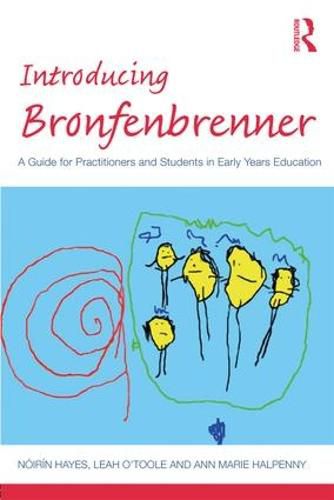Readings Newsletter
Become a Readings Member to make your shopping experience even easier.
Sign in or sign up for free!
You’re not far away from qualifying for FREE standard shipping within Australia
You’ve qualified for FREE standard shipping within Australia
The cart is loading…






Children learn in contexts, and the spaces, places and people they come into contact with have a deep influence on their development. Urie Bronfenbrenner’s bioecological model of development places the child at the centre of this complex network, and his influence has been extensive in early childhood education. This book presents an introduction to Bronfenbrenner’s model of development, drawing on practice-based research to identify and animate key elements of his model’s impact. It illustrates how his model can help bring quality to early learning environments and incorporates it into daily work with young children.
As well as providing a glossary of key terms, Introducing Bronfenbrenner covers areas such as:
a bioecological perspective on educational transition;
early education as a dynamic process;
nurturing children’s learning and development;
reflecting the bioecological in early years practice.
Using a variety of vignettes, practical examples of good practice and case studies, Introducing Bronfenbrenner is an essential guide to his work. It will be of interest to professionals working with children in early childhood settings and to undergraduate students training to become early childhood professionals.
$9.00 standard shipping within Australia
FREE standard shipping within Australia for orders over $100.00
Express & International shipping calculated at checkout
Children learn in contexts, and the spaces, places and people they come into contact with have a deep influence on their development. Urie Bronfenbrenner’s bioecological model of development places the child at the centre of this complex network, and his influence has been extensive in early childhood education. This book presents an introduction to Bronfenbrenner’s model of development, drawing on practice-based research to identify and animate key elements of his model’s impact. It illustrates how his model can help bring quality to early learning environments and incorporates it into daily work with young children.
As well as providing a glossary of key terms, Introducing Bronfenbrenner covers areas such as:
a bioecological perspective on educational transition;
early education as a dynamic process;
nurturing children’s learning and development;
reflecting the bioecological in early years practice.
Using a variety of vignettes, practical examples of good practice and case studies, Introducing Bronfenbrenner is an essential guide to his work. It will be of interest to professionals working with children in early childhood settings and to undergraduate students training to become early childhood professionals.